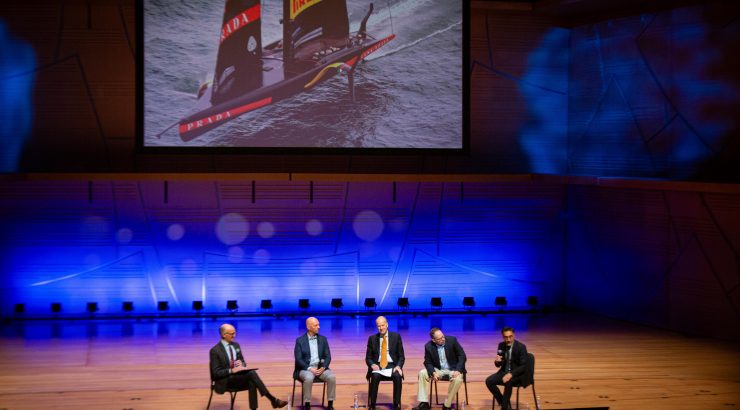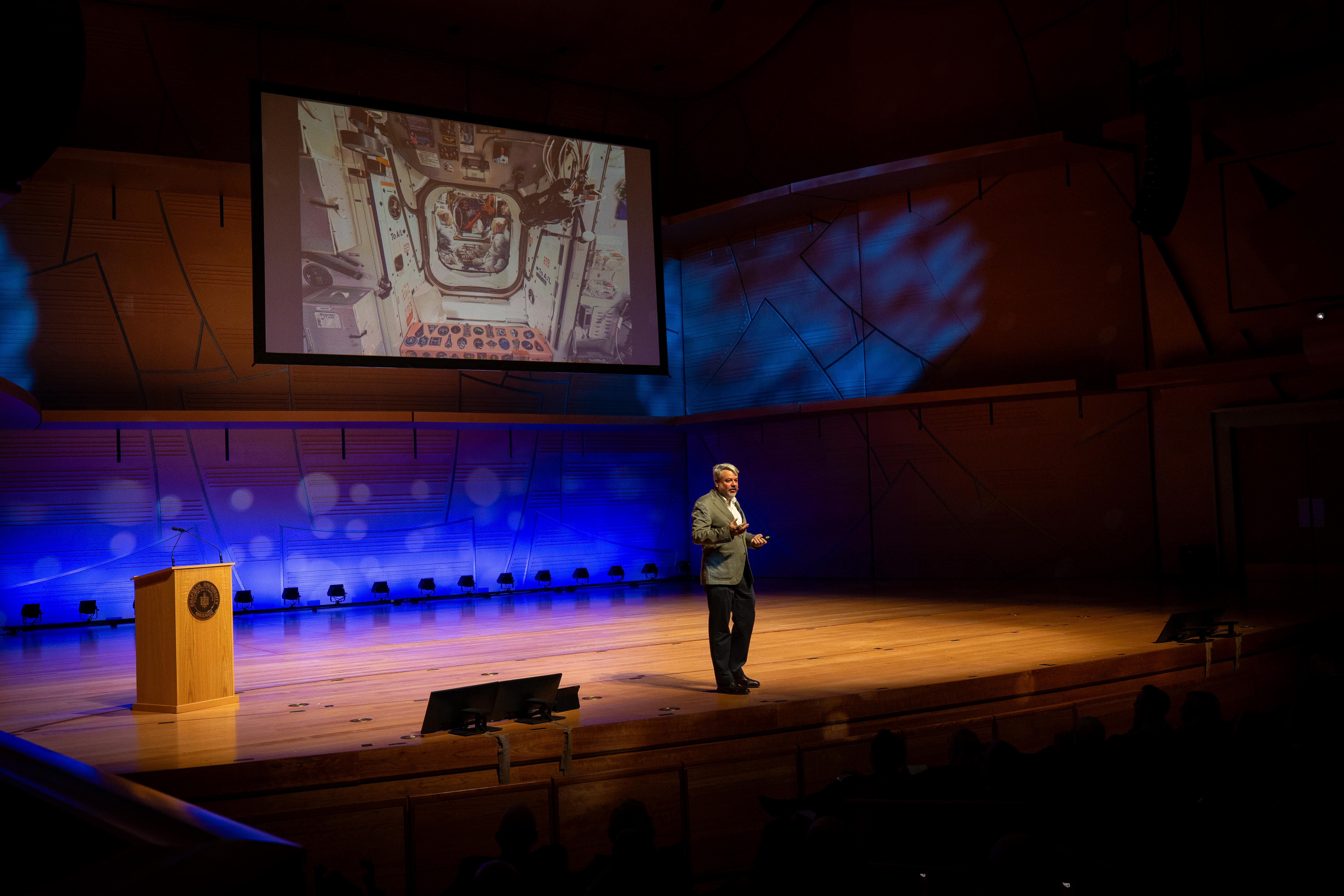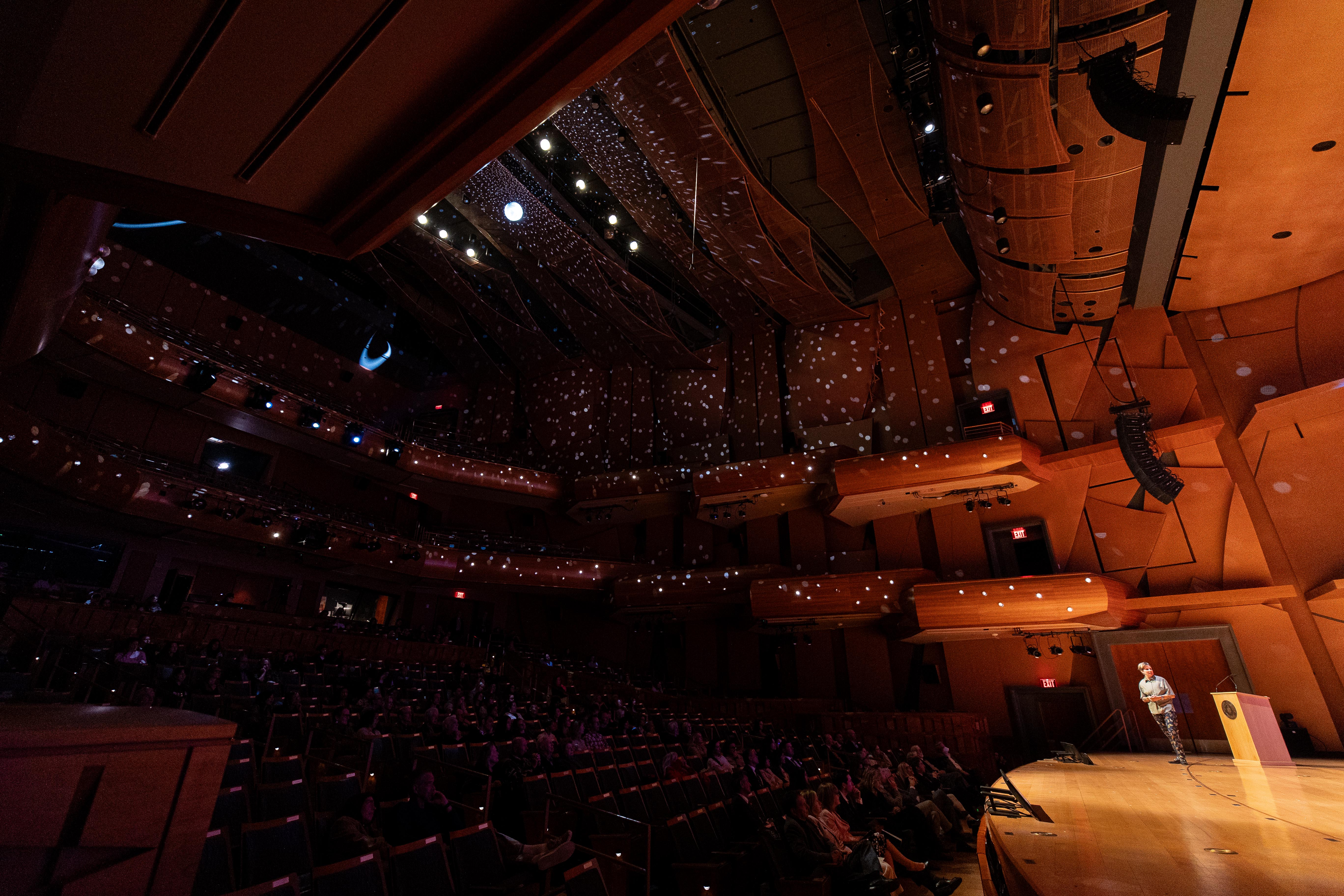
From Our Eyes: An Italian Perspective Exploring the Significance of Space and Culture
March 26, 2025

Dr. Justin Walsh (Art History) presenting her talk at the “Space and Culture: An Italian Perspective.” Photo courtesy of Ferrucci Institute.
This edition of From Our Eyes features Bella Brancato (‘25 Creative Writing). Brancato attended “Space and Culture: An Italian Perspective,” hosted by the Ferrucci Institute for Italian Experience and Research, which featured presentations and discussions with astronauts, artists, and experts in the sector.
I had the privilege of attending “Space and Culture: An Italian Perspective,” hosted by the Ferrucci Institute for Italian Experience and Research. This event was part of a series that Chapman University and the Musco Center for the Arts holds annually to celebrate and explore various topics related to Italian culture. This year’s event was focused on Italian influences on space.
As a senior minoring in Italian Studies at Chapman, this was my fourth time attending the Italian Perspective. I previously attended presentations on design (2022), theatre (2023), and song (2024), so I was intrigued by this year’s topic on space and culture.
Space Archeologist Dr. Justin Walsh (Art History) provided a brief history of Italy’s influence on space exploration. His research is on the lived experience of crews of the ISS, and his talk, “Living in Orbit, Italian Experiences,” discussed topics such as the discoveries of Galileo Galilei and the launching of San Marco. Italy has been one of the leading nations in spaceflight throughout scientific and cultural history. Dr. Walsh highlighted Paolo Nespoli, an Italian astronaut and engineer of the European Space Agency who published a book with photographs he had taken while stationed in space. He used Nespoli’s photographs to offer new perspectives in space exploration that depicted the complexity and beauty of space rarely seen on Earth.
“I have a long personal history of living in Italy and doing research there. When Dr. Federico Pacchioni (the Director of the Ferrucci Institute) invited me to participate, this topic seemed like a natural amalgamation of those themes,” said Dr. Walsh. “I had never attended this event before – it was exciting to see so many people with an interest in Italy and space on our campus.”

Lia Halloran (Art) presenting her talk at the “Space and Culture: An Italian Perspective.” Photo courtesy of Ferrucci Institute.
As an artist with direct experience studying Italian artistry and space culture, Lia Halloran (Art) shared her journey to understanding the significant connection between the two and their relevance in modern art and astrophysics. Halloran has completed many collections influenced by space exploration and uses her art to capture the vast and magnificent complications of the universe. Her collection Deep Sky Companion particularly demonstrates the artistic beauty of space through circular plates lining the slanted walls of the Cahill Center for Astronomy and Astrophysics at the California Institute of Technology, which illustrates the sights made possible to the human eye through advancements in space technology.
In addition to Dr. Walsh and Halloran’s discussions, a panel of experts (pictured in header) that included the Vice President at Persico Group (an Italian Manufacturing Company), Fabio Bressan; Chief Scientist at NASA Jet Propulsion Laboratory, Jonathan Lunine; Program Manager at the European Space Agency, Agostino Neri; and a pilot at Virgin Galactic, Nicola Pecile, spoke on how vital Italy’s contributions have been to space exploration and technology.
The group discussed the future of space exploration and were optimistic about the possibility of bringing civilization to space, including robot exploration, space diplomacy, and international relations between space programs.
I went into this event knowing very little of the intersection between space and Italian culture, and I left enlightened with the knowledge of how closely the two areas are connected. From a scientific and artistic standpoint, Italian culture continues to revolutionize human understanding of space studies, and the speakers at this event broadened my knowledge of this integral connection.

